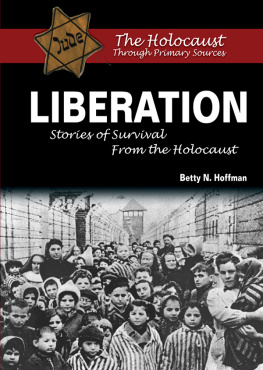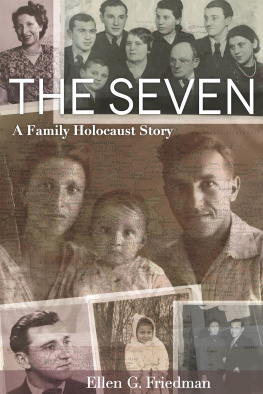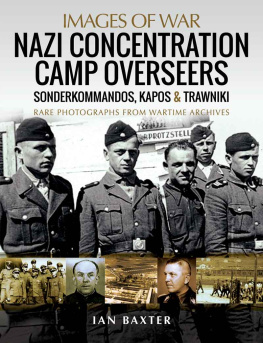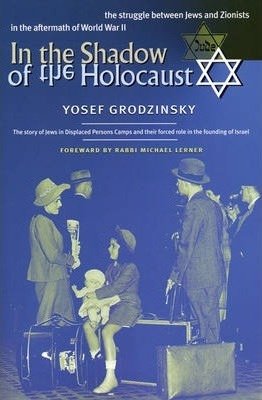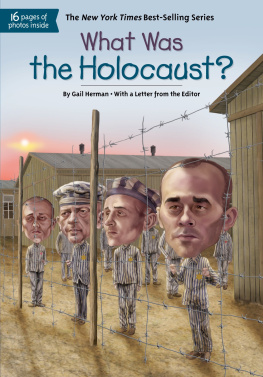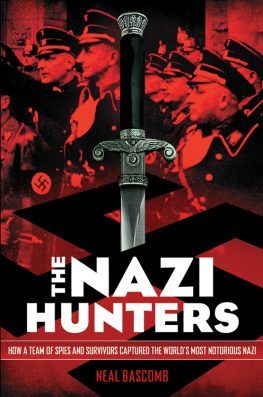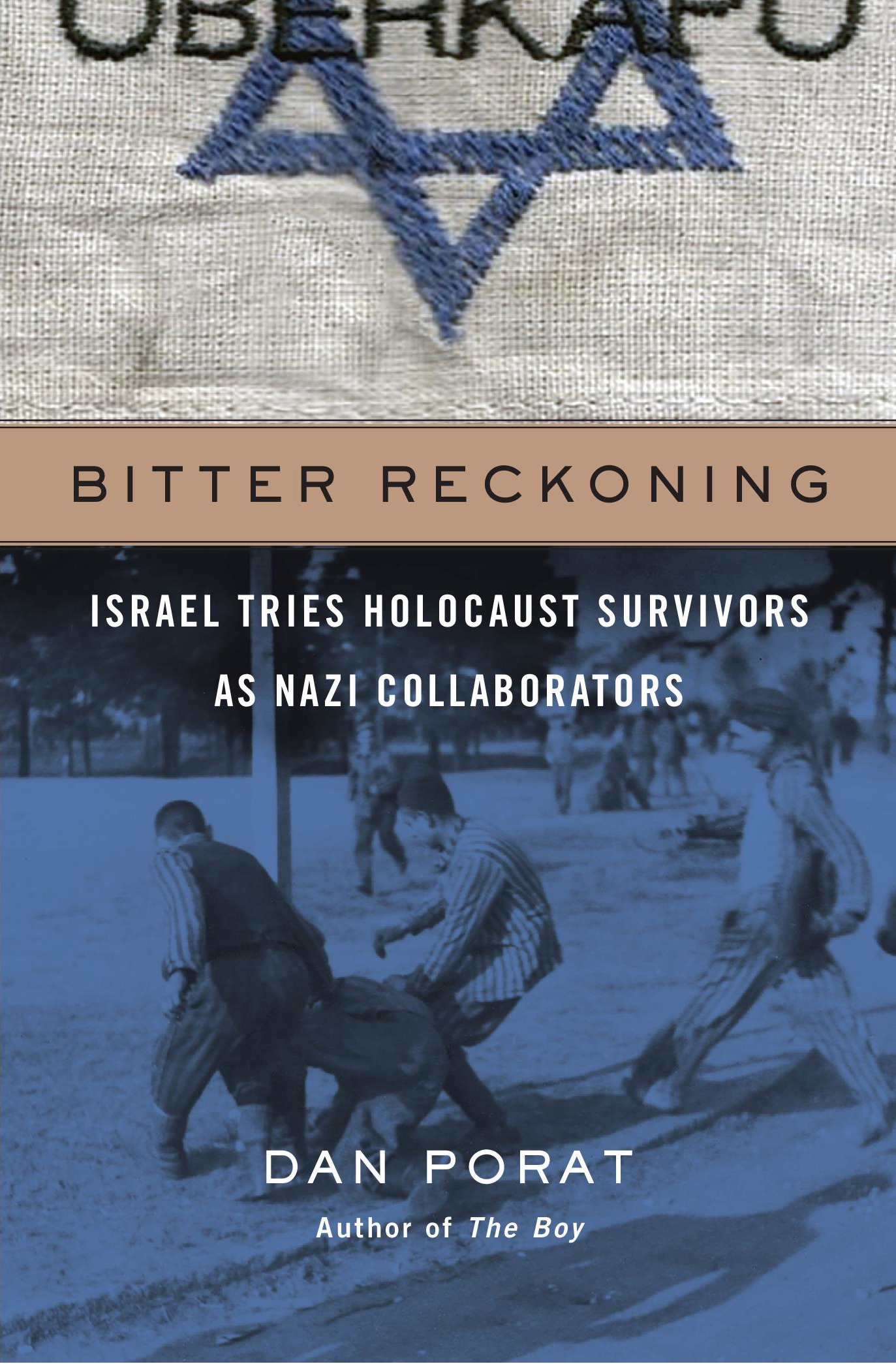Contents
Guide
Pagebreaks of the print version
BITTER RECKONING
Israel Tries Holocaust Survivors as Nazi Collaborators
DAN PORAT
The Belknap Press of Harvard University Press
CAMBRIDGE, MASSACHUSETTS LONDON, ENGLAND
2019
Copyright 2019 by Marona Inc.
All rights reserved
Jacket photos: (top) Oberkapo armband from a Nazi concentration camp (Wiki Commons); (bottom) Survivors attack a former guard at Bergen-Belsen concentration camp (US Holocaust Memorial Museum, photo 30428).
978-0-674-98814-9 (alk. paper)
978-0-674-24313-2 (EPUB)
978-0-674-24314-9 (MOBI)
978-0-674-24312-5 (PDF)
The Library of Congress has cataloged the printed edition as follows:
Names: Porat, Dan, 1964 author.
Title: Bitter reckoning : Israel tries Holocaust survivors as Nazi collaborators / Dan Porat.
Description: Cambridge, Massachusetts : The Belknap Press of Harvard University Press, 2019. | Includes bibliographical references and index.
Identifiers: LCCN 2019011292
Subjects: LCSH: World War, 19391945Collaborationists. | World War, 19391945CollaborationistsPublic opinion. | War crime trialsIsrael20th century. | KaposEuropeHistory. | IsraelisAttitudes. | Concentration camp inmates as guardsEuropeHistory20th century. | Holocaust, Jewish (19391945) | World War, 19391945Concentration camps.
Classification: LCC D810.C696 P67 2019 | DDC 940.53/18dc23
LC record available at https://lccn.loc.gov/2019011292
In memory of my father, Shlomo Porat
CONTENTS
IN JANUARY 1952, after a three-and-a-half-month trial, the Tel Aviv District Court issued its verdict in a case brought by the State of Israel against Yehezkel Jungster. Jungster was a Holocaust survivor whose wife and children had been murdered by the Germans. The lead judge, Pinchas Avishar, declared that Jungster had made himself a tool in the hands of the barbaric Nazi regime in its plan to annihilate the Jewish people. Jungster, the court determined, had been a Jewish collaborator with the Nazis.
Those present, who could see the defendant seated in the dock, must have had some trouble believing that the sickly man before them was as barbaric as claimed. Jungster, forty-one, suffered from a disease of the circulatory system; he had already lost his left leg and was losing his right leg to necrosis, had had one of his kidneys removed, and suffered from high blood pressure. The panel of three judges, however, explained that in 19431944, when Jungster was an inmate in the Grodziszcze and Faulbrck camps in western Poland, he had been a heavily built man , dressed in a leather jacket, shod in boots, who walked about with a rubber-coated metal-wire rod in his hand, beating at a whim anyone who crossed his path. Jungster had served as a kapoa concentration camp prisoner who was assigned by the SS to a position supervising other prisoners within the camp. Witnesses testified that Jungster beat his victims, often aiming for their genitals, even when no Nazi was in sight.
The case of Jungster was just one of about forty so-called kapo trials that took place in Israel between 1950 and 1972. The story of these trials is as yet little known, because only in recent years has the Israel State Archives made the transcripts of some of these trials publicly available. During these trials, Jewish functionaries, such as camp supervisors and ghetto policemen, faced indictments for their behavior during the Holocaust. Israeli prosecutors brought charges against them for having collaborated with the Nazis in assaulting Jews and inflicting grievous injuries. They were accused of blackmail and of surrendering victims to the Nazis, of membership in enemy organizations, of the murder of prisoners, and even of war crimes and crimes against humanity. In two-thirds of these cases the courts sided with the prosecution, and all but one of those convicted were sentenced to prison, for an average of twenty-six months behind bars.
This book asks a number of interconnected questions about these trials of Jews accused of collaboration. What motivated the trials in the first place? How did the judicial and social treatment of collaborators change over time? What was the relationship between the kapo trials and the two high-profile Holocaust trials that took place in Israel during this periodthose that centered on the Nazi Adolf Eichmann and the Hungarian Jew Rudolf Kastner? Were Jewish and non-Jewish collaborators viewed as equally culpable? How did the meaning of collaboration change between the immediate aftermath of World War II and the 1970s? And finally, what implications has the suppression of these stories had on our memory of the Holocaust?
The obliteration of these functionaries from Jewish collective memory, I believe, has allowed for the rise of an overly simplistic view that conceives of all victims as heroes. In a contemporary culture that tends to venerate Holocaust survivors, the idea that a victim might have behaved in a questionable manner seems inconceivable. The prevalent view today, however, was not the dominant one for the first twenty years after World War II, when many believed that the victims as a group, and especially those who had served in leadership positions in ghettos and camps, shared responsibility with the Germans for the catastrophe that had befallen them. By focusing on the kapo trials and their development, this book traces the changing attitudes toward those accused of collaboration.
When Allied forces broke open the gates of concentration camps in 1945, they discovered not only piles of corpses and dozens of gravely ill inmates but also survivors who were seeking revenge. Many of those who were liberated sought retribution not just against the Germans but against former Jewish functionaries in the camps and ghettos as well. Freed inmates lynched and beat Jews who, as ghetto policemen, had surrendered them and their family members to the Nazis or who, as kapos in concentration camps, had harassed or abused them.
This violence continued outside the liberated camps. To quell the brutality, leaders in the reemerging Jewish communities in European towns and displaced persons (DP) camps channeled these disputes into honor courts, which were established to resolve ordinary disagreements among members of the community. These courts, presided over by prominent individuals, also examined the moral behavior of functionaries and issued social punishments such as public denunciations and excommunication from the community. In most instances, these judgments succeeded in curbing the violence within the community; they also helped it rebuild its self-identity as a wholesome society, free of impure elements that had contaminated it.
When survivors immigrated to Mandatory Palestine, the same kinds of intra-Jewish clashes that had been seen in Europe erupted in public spaces there. Two institutions in pre-state Israel operated similarly to the honor courts in Europe: Landsmanschaften (communal organizations of expatriates from a specific city or country) and the World Zionist Congress honor court weighed in on accusations against functionaries. But these institutions were inadequate for addressing the dozens of disputes that flared among the survivors. Media commentators and public figures called upon the heads of the Yishuv, the Jewish community in Mandatory Palestine, to alleviate tension by establishing a public committee of socially prominent figures to deliberate these cases and issue social punishments. The leadership chose, however, not to establish such a committee, deeming social penalties insufficiently severe for those accused of cooperating with the Nazi mission to annihilate the Jewish people.



